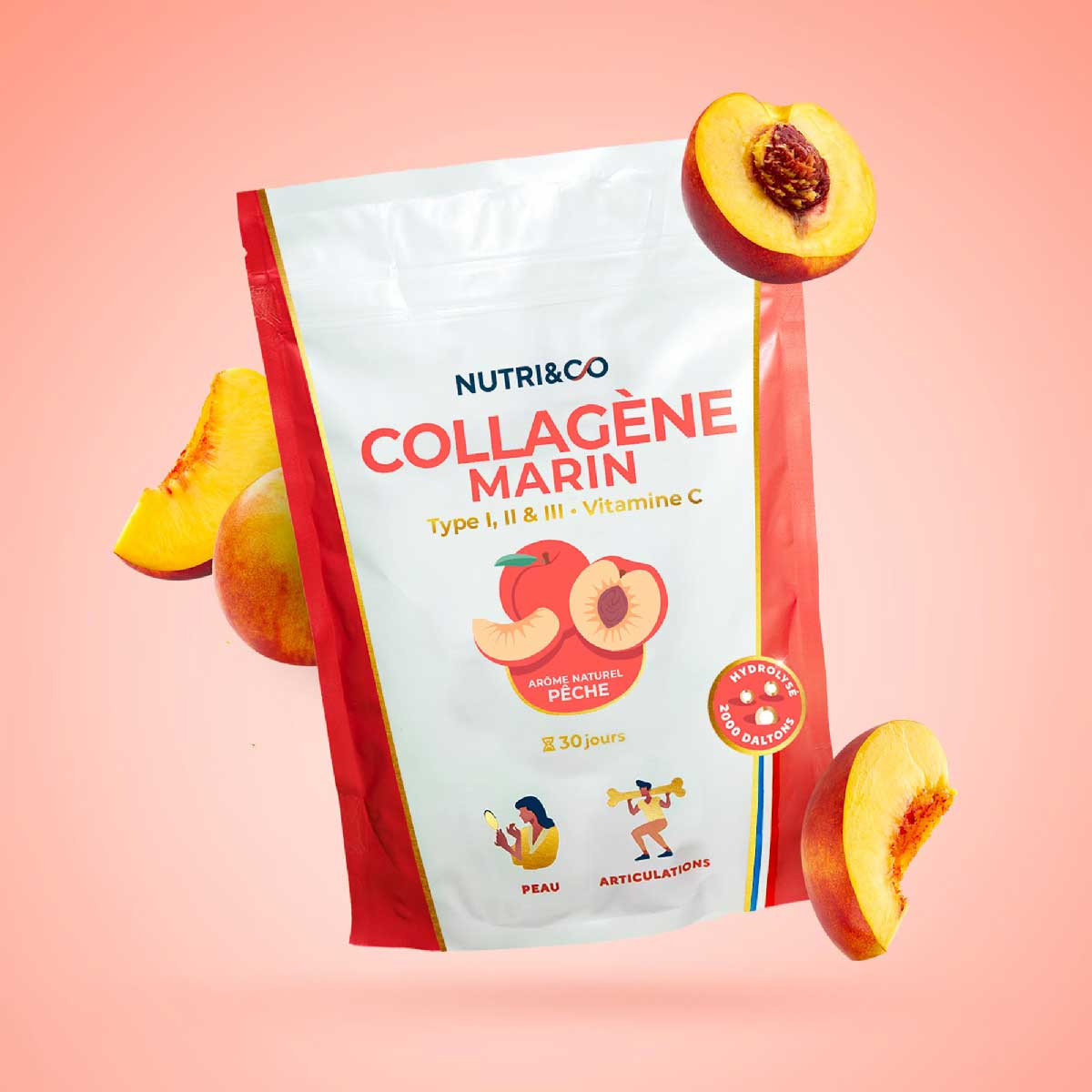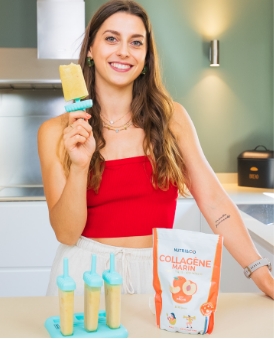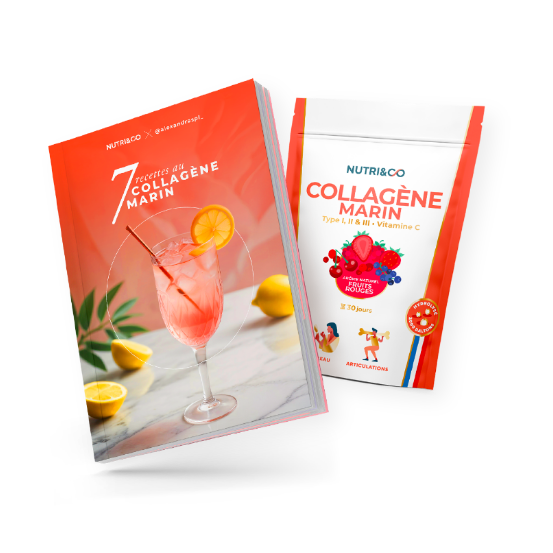
Collagen
Collagen gives the skin and cartilage their structure and suppleness, but as adults, we lose 1% of this protein every year. Many of us turn to marine collagen to try to repel the visible signs of aging.
While many formulas exist, none have managed to combine clinically documented collagen peptides with a fruity taste, all without sweeteners or artificial flavors. View more
“La star de mes recettes est évidemment notre Collagène marin, un produit de très haute qualité avec ses 2 collagènes brevetés, son faible poids moléculaire.”
@Alexandraspl_Diététicienne-nutritionniste et créatrice culinaireVoir la recette
Votre ebook offert pour tout achat
7 recettes au collagène marinAlexandra, diététicienne-nutritionniste et créatrice culinaire, alias @Alexandraspl_ sur les réseaux sociaux, a rédigé cet ebook pour Nutri&Co.
Nous partageons la même philosophie pour proposer des recettes saines et gourmandes, afin de démocratiser les ingrédients de la Nutra comme le collagène et les inclure dans une alimentation santé et plaisir.


Le collagène marin en poudre Nutri&Co propose une solution complète pour favoriser la santé cutanée et articulaire. Composé de deux types de collagène marin et enrichi en vitamine C, ce produit se distingue par des brevets de fabrication fiables, renforçant ainsi sa qualité.

Paiement
sécuriséLivraion offerte
dès 69€ d'achatLivraion
en 48hFaites des
économiesParrainer
un procheRécompenses
fidélité















